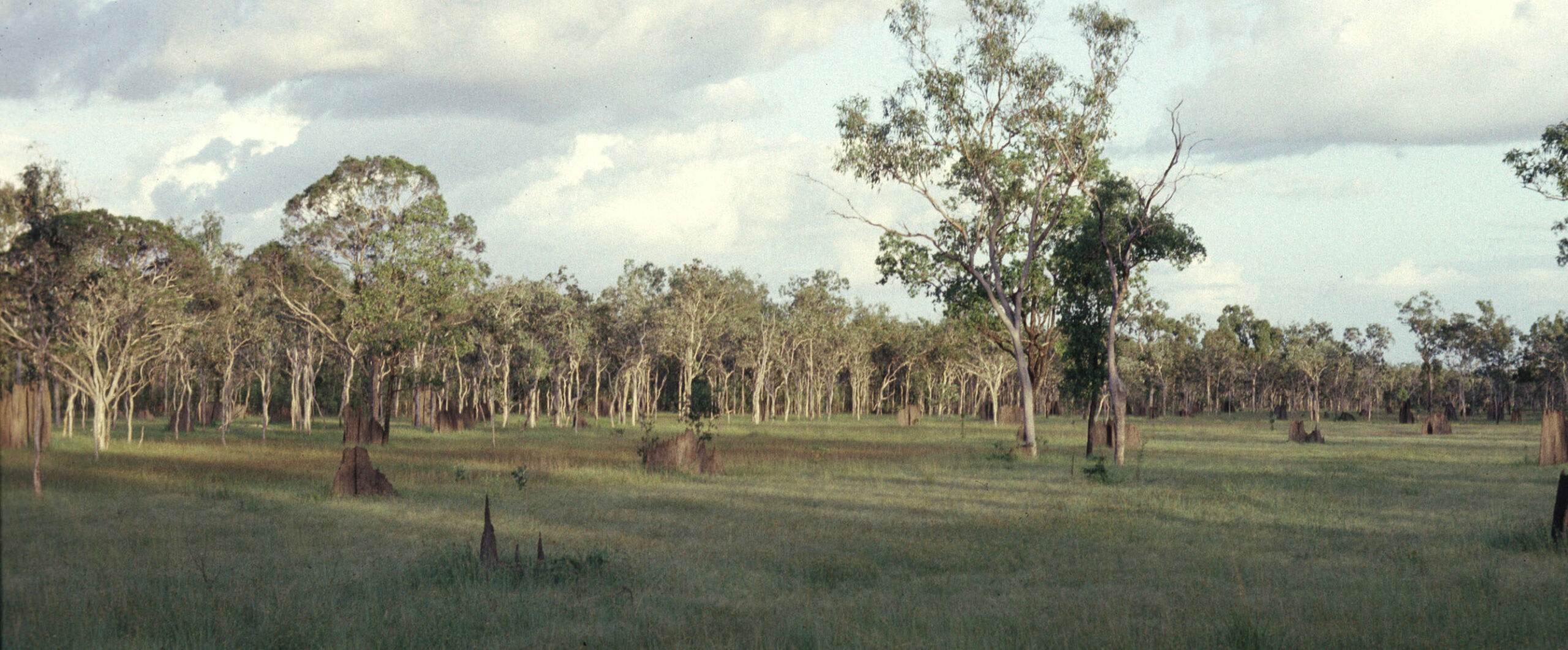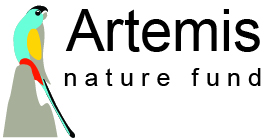Veteran parrot researcher and leading conservation scientist Professor Stephen Garnett shares his long history with Golden-shouldered Parrots on Artemis, which started in the early 1990s.
Golden-shouldered Parrots are something of a mystery. They ought to be abundant. They usually lay 5-6 eggs and adults commonly live for more than five years. The nests they dig in antbeds ought to be way more secure than tree hollows because the hole is exactly the size of the parrot. Yet their numbers are getting fewer and fewer. After three years of intensive research in the 1990s we were left with two theories for their decline. They are theories that remain to be proven one way or the other. Doing so will be critical for ensuring the parrot remains with us.
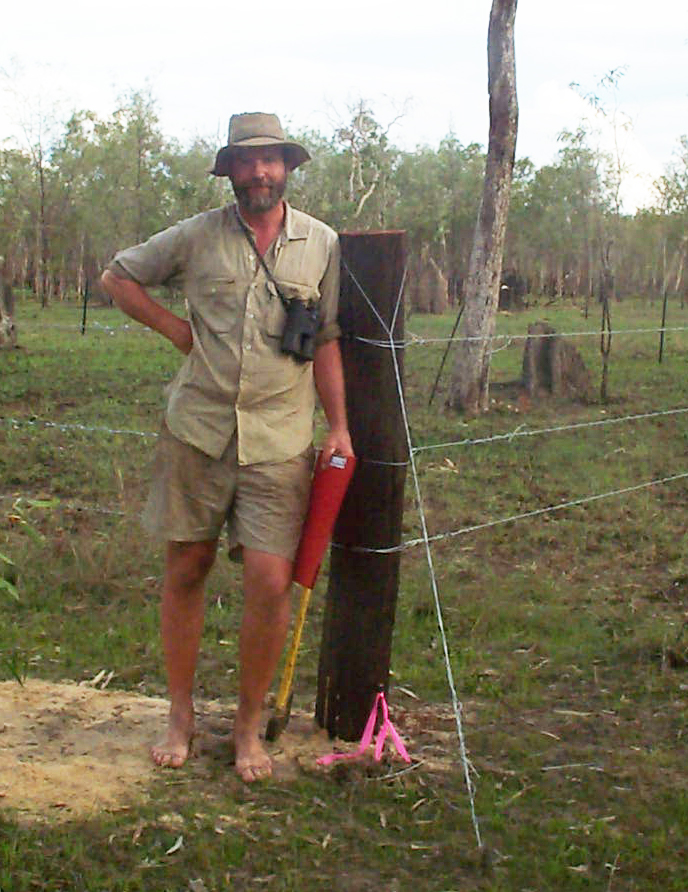
The first theory was that breeding fails too often. Our main worry was loss of adults. The numbers of eggs and young taken by goannas, butcherbirds and cats at the nest seemed too small to cause a population decline but adult losses were much more worrying. While it was something we never witnessed, little piles of adult feathers at abandoned nests told the story. Females seemed most vulnerable. They do most digging and all the incubating so have to go in and out of the nest more often. If a predator attacks when the parrot’s head is in the nest hole, or when the parrot emerges from the nesting chamber, they can be ambushed. Such ambushes are launched from perches in nearby trees. However, over the years, tree density has increased because fires hot enough to keep the vegetation open are now less frequent. This makes it more likely that predators will be successful than in the past. Our first theory was therefore that the population has gradually declined because losses of adults at the nest have increased.
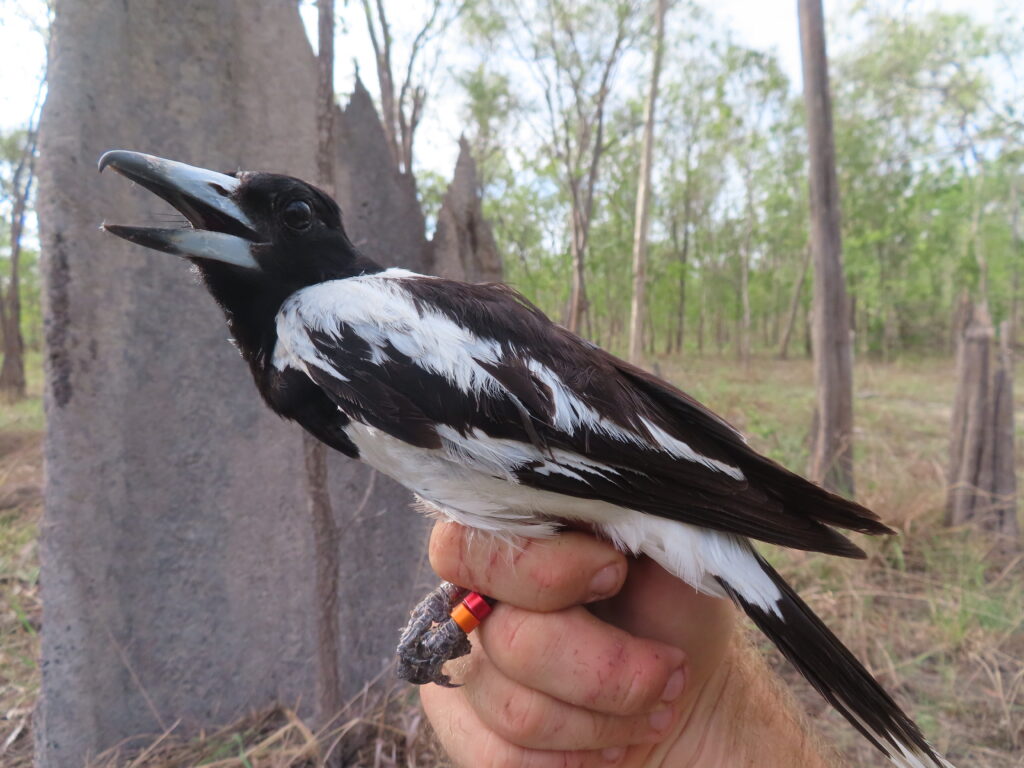
The second theory was that too few birds were surviving the tough time all seed-eating birds face at the end of the dry season and early wet season. Every year annual grasses produce millions of seeds and these provide plenty of food for seed-eaters in the dry season. For the parrots we watched, the fire grass seeds they preferred were so dense that the parrots only needed an hour for feeding each morning and afternoon, spending the rest of their day asleep in dense shade. But at the end of a long dry season, such seed became scarce. Then the rain came and remaining seed germinated. The change was almost instantaneous. From one day to the next the parrots we were watching doubled their feeding time. They hunted for different sorts of seed that had not been buried. They scraped seeds off rocks. We even saw them hauling germinating seed out of the ground.
The behaviour of butcherbirds changed just as suddenly. We had seen butcherbirds at parrot nests and suspected they were important nest predators but, during the dry season, they largely ignored the flocks of young parrots. But, when the rains came, we started to see butcherbirds attacking feeding parrots which now spent more time on the ground and afford less time to be alert. Fortunately the parrots had friends – nesting Black-faced Woodswallows. Woodswallows chase butcherbirds that come too close, their loud alarm calls alerting the busily feeding parrots. As part of our research we had colour banded many young parrots. The only ones we saw a year after banding were those we had also seen with woodswallow flocks in the early wet season – we suspected the others had been killed. However, woodswallows are also open country birds – they are common in inland Australia, and they too seemed to be less common in places where the woody growth had led to a thickening of the vegetation. The second theory was that the parrots are declining because too few survive the wet season.
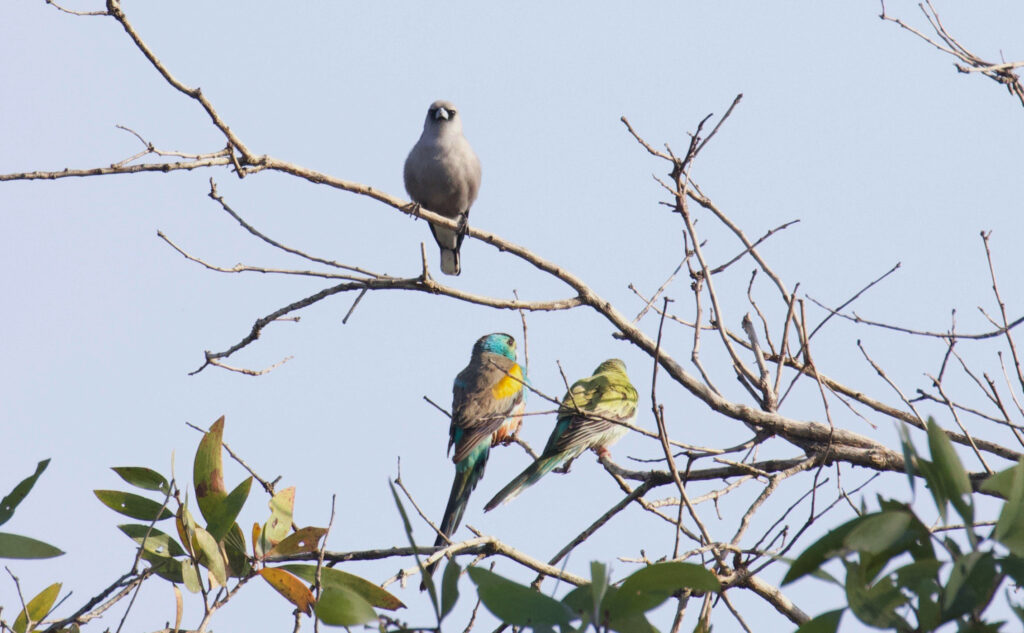
But that was where we had to leave our research. Was it losses at the nest or losses in the early wet season that were driving population declines, or a combination of the two? Which sort of habitat should be managed? How should it be done? Were the butcherbirds really responsible? For years we suggested these questions should be answered by further research but never raised the money to do so. For years parrot numbers have continued to decline. I am delighted now to see the renewed interest in these lovely birds, and the way that land management and research are being integrated to address the questions we left unanswered a quarter of a century ago.
